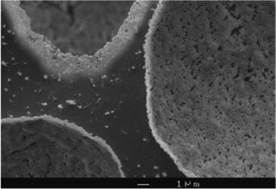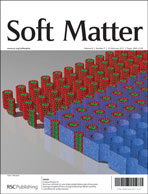Here we report the preparation of super stable liquid foams with various bubble sizes stabilized by colloidal ethyl cellulose (EC) particles. What is novel and different in this particle stabilized foam is that both the initial material (EC) and processes used are in principle food grade, thus it may offer scope in food applications. The particles were prepared using a conventional anti-solvent precipitation method, involving the dissolution of EC polymer into acetone, followed by fast mixing with water (anti-solvent), leading to the precipitation of EC particles, then followed by the rotary evaporation of acetone. The interfacial tension of the resulting dispersion is 36 mN m−1, indicating that particles co-exist with surface active and water soluble components, which is most likely a low molecular weight EC fraction. The average particle diameter is 0.13 μm and their zeta potential is −50mV at pH = 6, increasing to −5mV at pH = 3. This negative surface potential is attributed to adsorption of hydroxyl ions, known to occur on many hydrophobic surfaces, including oil–water, air–water and hydrophobic particle–water. As a result, there is strong electrostatic repulsion between EC particles at neutral and low ionic strength, which stabilizes EC dispersion and also significantly increases the adsorption barrier of EC particle at the air–water interface. Due to their similar origin, both inter-particle repulsion and adsorption barrier can be controlled by pH and/or ionic strength, which leads to dispersion destabilization and at the same time good foamability and extreme foam stability at acidic conditions (pH < 4) and/or moderate or high ionic strengths (I > 20 mM). Foam coarsening shows an initial stage with coarsening time of approximately 1 week, followed by a plateau, where the coarsening has been arrested for a period of months. By using cryo scanning electron microscopy, we reveal that these EC foams are Pickering stabilized, where EC particles are closely packed at the air–water interface forming a single or multi-layers. We also show that super stable EC foams can be prepared using various aeration techniques, allowing us to vary the bubble diameter from a few microns to hundreds of microns.


 Please wait while we load your content...
Please wait while we load your content...